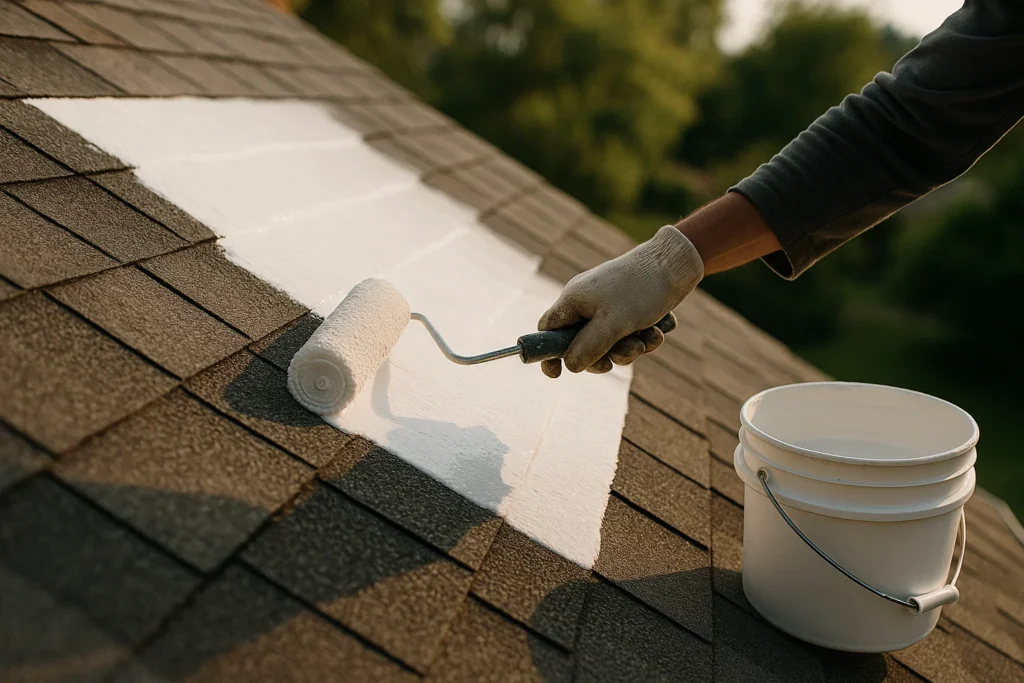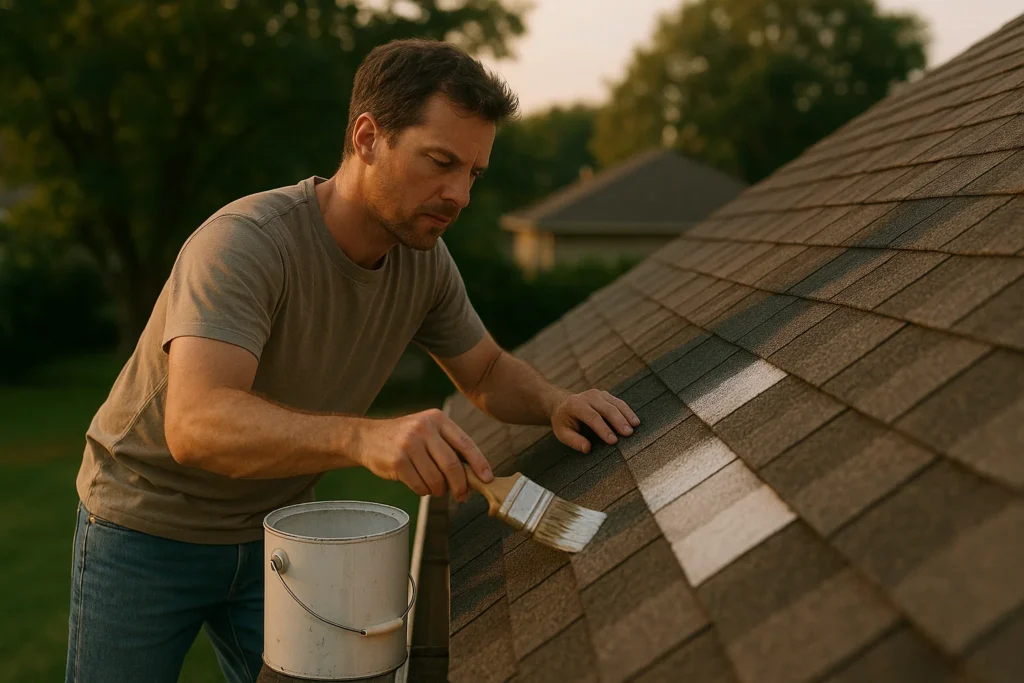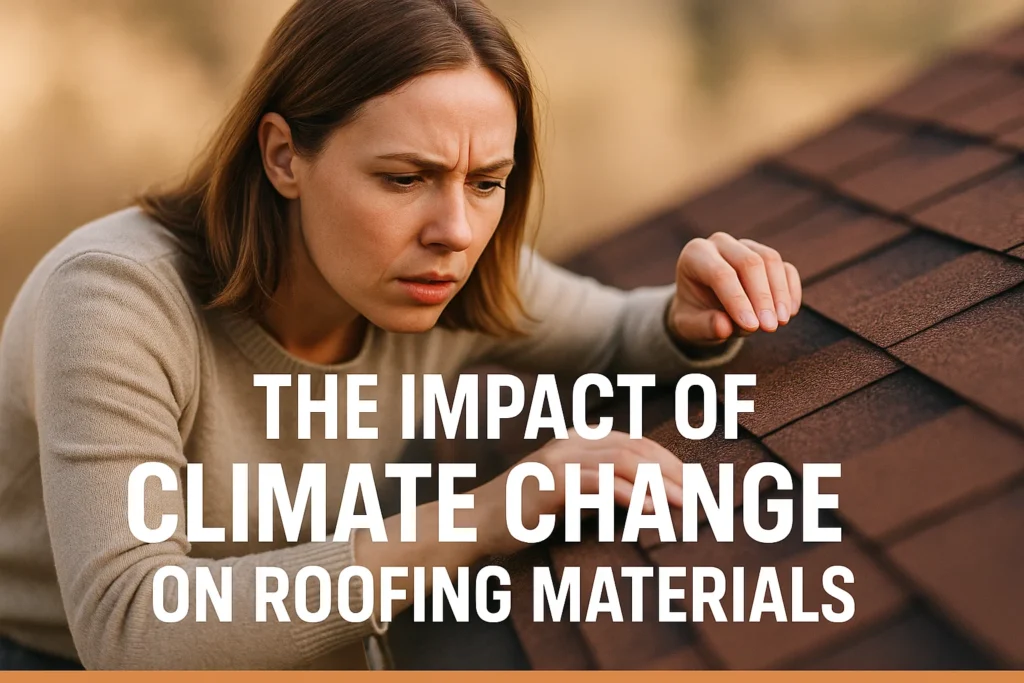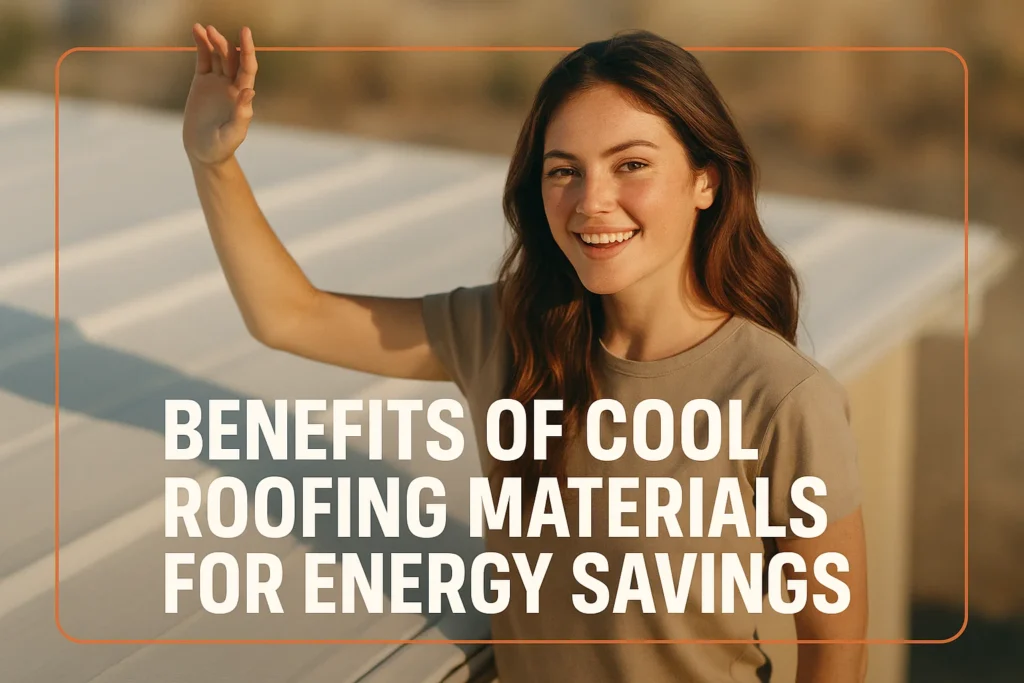Your roof takes a beating year after year. No wonder homeowners are seeking methods of providing their shingles with additional protection. That’s where roof coatings come in. The key is to understand what your particular roof requires and to apply the appropriate coating. Asphalt shingles are most common in homes, and they are quite durable. The materials are brittle as UV rays degrade them with time. When you select the correct one, it can extend the life of your roof by years. However, the best roof coating is the one that suits your particular case. Let’s find out:
Types of Roof Coatings Suitable for Shingles
1. Acrylic Roof Coatings
Acrylics are used because of their versatility and UV resistance. Their membrane is flexible and deflects sunlight off the roof, cooling down the roof and lowering energy expenses. Acrylic coatings bond well to the surfaces of shingles and allow a little movement of the roof without cracking.
- Pros: UV resistant, High reflectivity, cost-effective, easy to apply
- Cons: Wet, warm conditions for application, weaker in standing water or excessive rainfall
Best for: Warm and dry climates or regions with moderate rainfall.
2. Silicone Roof Coatings
Silicone coatings form a highly resistant waterproof lining that is suitable for use on roofs that are susceptible to standing water or heavy rain. They are flexible and do not degrade under pressure to resist ponding water. But silicone may grab dirt, and this can diminish its reflectivity with time.
- Pros: Waterproof, UV-resistant, flexible, good weather resistance
- Cons: More costly, dirt accumulation affects reflectivity, and may require recoating to preserve the look
Best For: Humid or rainy climates, low-slope or flat shingle roofs with moderate rainfall.

3. Elastomeric Roof Coatings
Elastomeric coatings perform better to deal with thermal expansion and contraction and avoid shingles cracking in high-temperature fluctuation areas. They are waterproof and UV protected in addition to enhancing energy conservation through heat reflection.
- Advantages: Great strength, UV resistant, energy efficient, very flexible
- Cons: It could be more expensive than acrylics, needs a clean roof to get a good adhesion.
Best suited: Regions with drastic changes in temperature.
4. Polyurethane Roof Coatings
Polyurethane coatings offer high impact-resistant. Hence, it can be used in hail-prone areas. They offer good waterproofing abilities and strength, but they are more costly.
• Pros: shockproof, excellent strength and waterproofing
• Disadvantages: Costly, not widely available.
Ideal in: Areas that experience hail and extreme climate changes
Other Shingle Roof Coatings Categories
• Bitumen-based Coatings: These are asphalt-based coatings that provide waterproofing but lack the flexibility or UV resistance of more recent options.
• Roof Sealant paints: The dispersion is normally an acrylic paint, which gives a protective coating with reasonable waterproofing and cosmetic benefit.
How to Apply Roof Coating To Shingle Roofs
Preparing the Roof Surface
Roof coating of shingle roofs begins with good preparation. It would be important to ensure that the roof is completely dry before applying the coating because moisture can prevent the coating from adhering and thus lead to bubbling or peeling. In case the shingles have been treated with water repellents or silicone sealants before, they are to be removed because they may hinder adherence.
Timing and Weather Conditions for Application
Preparation is as important as selecting the right weather conditions for the application. Roof coating must be done in dry weather with no precipitation forecasted within 24 hours to enable complete curing. Ideal air temperatures are between 50°F and 85°F (10°C to 29°C), because extreme hot or cold environments can have adverse side effects on the drying and bonding of the coating. It is sometimes good to apply the coating early in the morning as the roof is cooler, enabling the coating to set evenly and avoiding the risk of the coating drying too quickly and reducing the risks of cracks or poor adhesion.
Selecting Suitable Application Tools
Application of the right tools will lead to even and successful application of the roof coating. A pump-up garden sprayer is the best for applying the coating. A paint roller with a 3/8-inch nap is the best when working on textured shingles to allow the coating to penetrate. For larger projects, an airless sprayer will speed the task. When spraying, keep the sprayer approximately 8 to 10 inches from the roof surface to maintain even coverage. Once sprayed, it can be backrolled with a roller to get the coating properly worked into the shingles and to give a smooth, even finish.
Applying the First Coat
Start to apply the roof coating at the bottom side of the roof and move upwards to prevent the development of streaks or runoff lines. Apply even coats of paint by using smooth, overlapping strokes to avoid piling the paint on in one stroke. A thin and consistent layer will give the best results in terms of durability. Follow the manufacturer’s coverage recommendations, typically about 250 to 300 square feet per gallon, depending on product and roof texture. Correct use at this point establishes the basis of a long-term shielding barrier.
Drying the First Coat
After the first coat is applied, it requires enough time to dry fully, which is normally 24 hours, depending on weather conditions. It is advisable not to walk on the roof or expose it to rain, dew or strong winds during this curing time because such may interfere with adhesion or may damage the wet coating. It is important to dry correctly so that the following layer sticks properly and the general protection can be retained in the long run.
Applying the Second Coat
After the initial coat dries, apply a second thin layer with the orientation at right angles or 45 degrees to the first layer. This helps to seal any holes and makes the protective layer thicker. It is to be applied smoothly and not too thickly because it will crack or peel off. Allow this last coat to dry completely to make a durable, waterproof, UV-resistant finish.
Post-Application Maintenance and Safety
After your roof coating has cured completely, routine inspection and soft cleaning will maintain its performance and life expectancy. The majority of coatings require reapplication every 5-15 years, depending on environmental exposure. During the whole process, it is important to place ladders on a flat surface and wear gloves, eye protection, and appropriate clothing when working with coating products.

How to Choose the Best Roof Coating for Your Shingles
- Assess your local climate (rainfall, humidity, temperature swings).
- Consider roof slope and condition (standing water issues favor silicone coatings).
- Evaluate budget constraints.
- Opt for coatings that offer warranties and strong adhesion for shingle roofs.
- Ensure proper surface preparation before application for best performance.
Conclusion
The most expensive or the most advanced roof coating is not always the best one. When homeowners take into consideration the local climatic trends, the current state of their roof, and the coating that is selected to suit their specific case, they will receive the most beneficial results.
Roof coatings are a cost-effective, efficient method of prolonging the life of shingles, enhancing energy efficiency and preserving the protection of a home against environmental factors. When chosen and used properly, these protective shields can be a smart investment in the long-term maintenance of a home and peace of mind.
Expert advice may be helpful to give an opinion, in particular, in a complicated case or in the case of older roofs where some problems have already been observed. However, understanding the basic characteristics of various types of coating helps the homeowner make a confident choice in terms of safeguarding one of the most valuable assets.
FAQs
Yes, but the shingles should be clean, dry and sound. Some types of coating require a primer or some preparation to increase adhesion to shingles.
Roof coatings typically have a life of 5 to 15 years, with a life varying according to the type and exposure. Inspections on a regular basis may be used to identify when recoating is required.
The key to the effectiveness of most quality roof coatings is that they are waterproof and prevent moisture entry into the shingles, although this depends on how they are applied.
Reflective coatings such as acrylic and elastomeric can be used to minimize the absorption of heat, which helps to cut down cooling expenses in warmer climates.
Silicone is better in wet areas and ponding water and is more costly. Acrylic is less difficult to apply and less expensive and more suitable in dry conditions.







